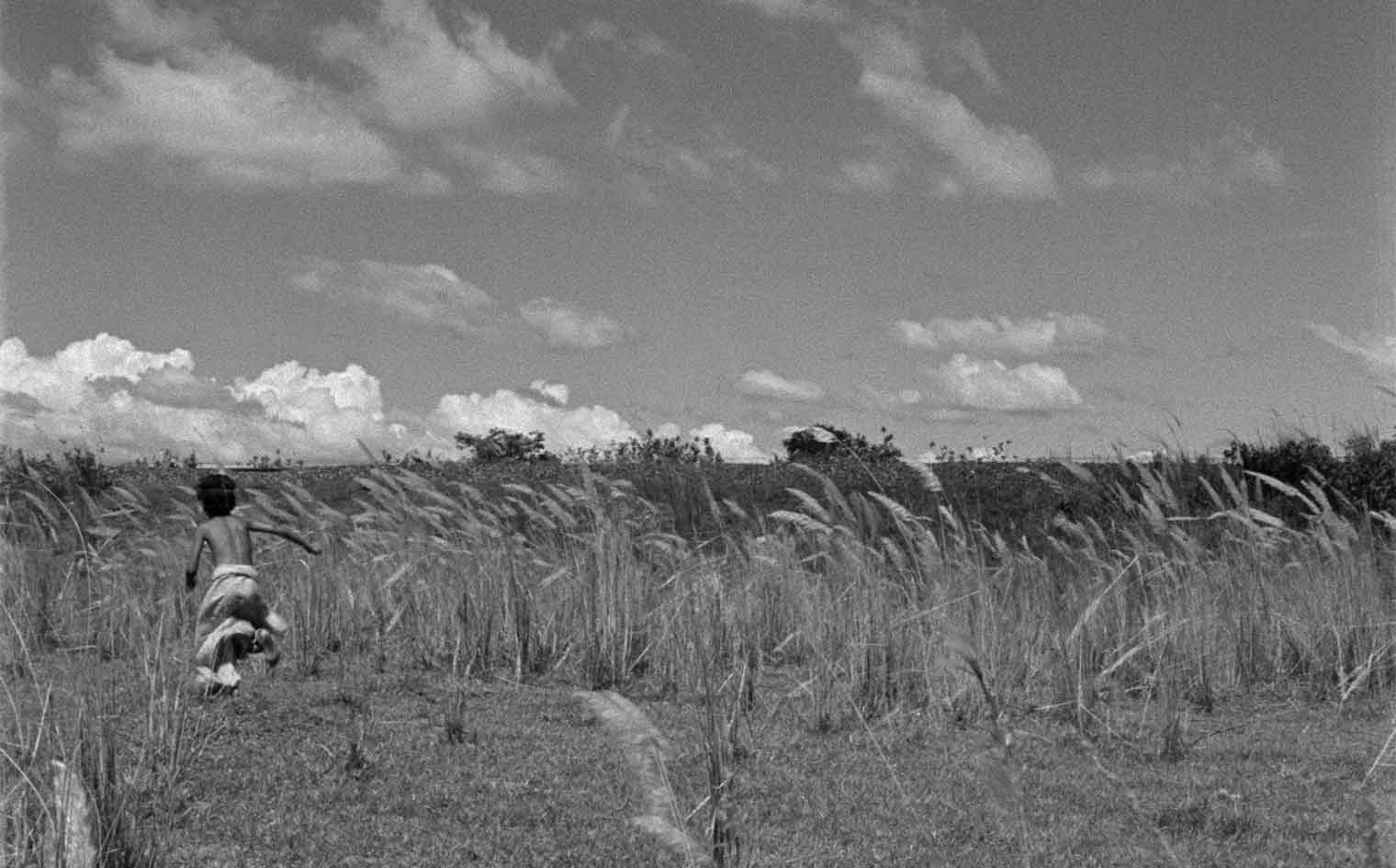There are certain stereotypes that arise when one discusses Indian cinema, stereotypes which are not completely unfounded. Realistically, if Bollywood filmmakers want their movies to be distanced from colorful setpieces, glossy production design, sweeping romance, and lavish musical numbers, they would do well to make… Well, not that. It is an unfortunate product of an industry so desperate to establish their own brand that the masterful GANGS OF WASSEYPUR feels like such an anomaly, but there was a period of time within this industry where these constraints were not in place, a period of time where PATHER PANCHALI, a heart-rending, poetic, neorealist drama capturing life in India’s hearth, could be both a critical and box office hit. I remember speaking to my grandmother, who grew up in India, about this film. It might sound preposterous to think of now, but Satyajit Ray’s film hit the Indian cinematic landscape like a meteor. People went out in droves to see a movie that was not only challenging, but brutally depressing. It seems like such a far cry from today, where you can’t get a popular film made in the country without a banging soundtrack accompanying it, but it certainly was the case in 1955.
PATHER PANCHALI follows the lives of a small family living in rural Bengal: the absent father (Harihar),the hardworking mother (Sarbojaya), and their two children (Apu and Durga). Through the years, they toil away, scraping together whatever meager means they have to survive. Dreams, hopes, and aspirations seem like fanciful ideas to them, especially when basic necessities like food and shelter were always followed by an ellipsis, joined by an ominous question mark. However, Ray’s film manages to avoid many of the potential pitfalls of neorealist cinema. There is no voyeurism present, no perverse fascination with the lifestyles of an impoverished populace on the outskirts of urbana. Instead, the harsh realities of their lives are filmed with a gentle, poetic touch, one that paints the drudgery of everyday existence with the flourishes of a landscape painter. It is highly evident that this film, in the way it captures nature and its inhabitants, is an influence on early Terrence Malick. The world through Apu’s eyes feels larger than life, both in its beauty and its monstrousness.

Upon this rewatch commemorating the 65th anniversary of Ray’s masterwork, I was especially struck by Sarbojaya’s character and all of her tough complexities. The easy storytelling move would be to have portrayed her as a saintly figure, working away at the thankless job of motherhood with steely resolve and unwavering compassion—to an extent, there is truth to that. But there is also a side of her that’s petty, that’s angry, and can even be borderline abusive, such as when she drags Durga by her hair. Such failings of character are not judged by Ray, rather simply observed with the director’s trademark empathy. Satyajit Ray is not so presumptuous as to place his camera inside the perspective of Sarbojaya, but he is emotionally intelligent enough to invite us to see the world through her eyes, without necessarily forcing the point of view on us. Like the great works of neorealist masters from the likes of Roberto Rossellini and Federico Fellini, Ray establishes that the world he is portraying is one that belongs to his characters, not us. We are simply invited to be compassionate to their predicament.
It sounds like the PATHER PANCHALI I am describing is a difficult watch, one that drowns the audience in miserablism because of its oh-so-importance, but Ray also includes a lightness and humor wrought from the children’s perspectives to offset the well of sadness. Apu and Durga are a playful pair that delight in thievery and pranks, smiling through the tears and rain and muck. Apu’s nimble energy, combined with Ray’s sharp compositions and Ravi Shankar’s delirious score, is a joy to watch as he runs through the village with a reckless abandon that we know to be untempered by the responsibilities of maturation. It is through this energy that Ray makes his point. PATHER PANCHALI, more than anything else, is about how we experience life at different stages of our personal development. The adults of this world are brought down by the relentless difficulties of rural Indian life, forced into taking care of a family within a harsh and uncaring world. It is notable that when Ray shifts his story to focus on Apu and Durga, he places more of an emphasis on nature. He concentrates on the wind blowing through the leaves, the insects jumping on the lake, the sunlight filtering through the canopy. Unfettered by the responsibilities of adult life, they are able to see the beauty in this world that they live in. The sadness of the film comes from the fact that we know this beauty will leave them when they grow up. Ray’s film is not a proclamation that we should keep our inner child strong, but a eulogy to the inevitable death of that child; an encapsulation of what we once were and what we will become.
















Comments